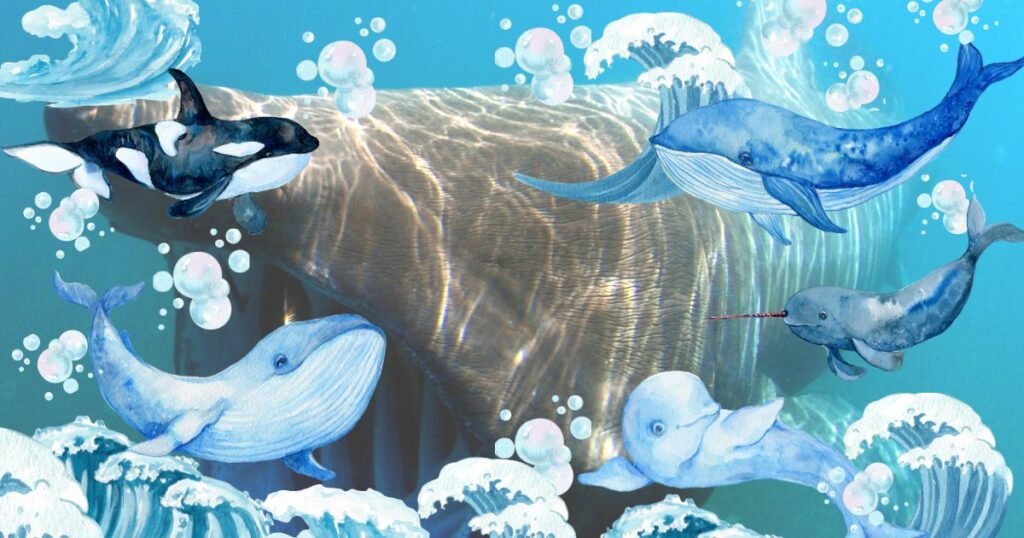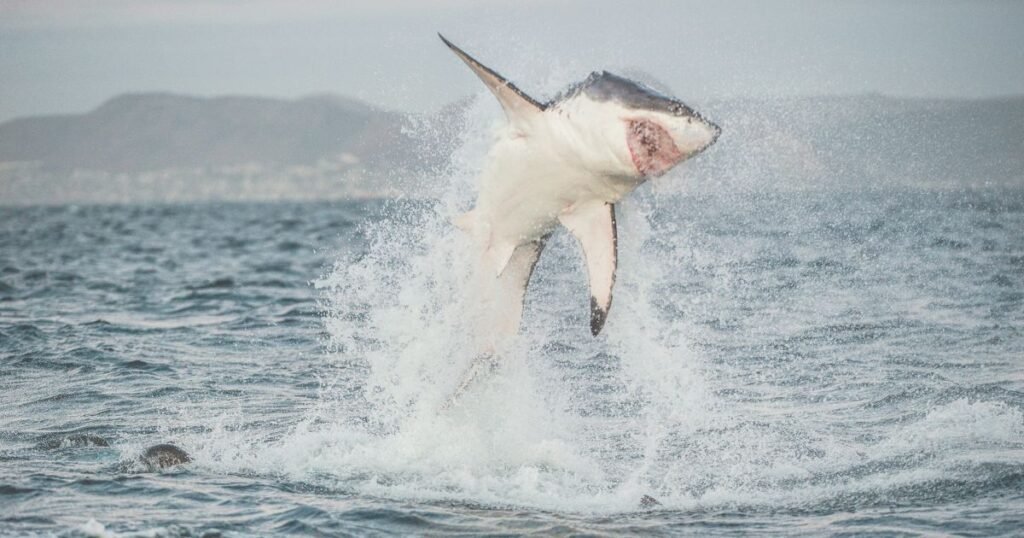Basking sharks are one of the most fascinating yet overlooked creatures in our oceans. As the second largest fish species in the world after the whale shark, reaching lengths of over 10 meters, these gentle giants have captured the human imagination for centuries. Their massive size, paired with their docile, filter-feeding behaviour, has earned them a reputation as the “gentle giants” of the seas.
While they may not have the fierce nature of other shark species like great whites or tiger sharks, basking sharks are incredible animals that are worthy of appreciation and conservation efforts. World Basking Shark Day, celebrated each year on May 19th, aims to raise awareness about these misunderstood creatures and highlight why they are so crucial to marine ecosystems.
In this article, we’ll dive into the unique traits and behaviours of basking sharks, explore why they are under threat, and outline what is being done to protect these massive sharks around the world. By the end, you’ll have a deeper understanding of why World Basking Shark Day seeks to celebrate and conserve these gentle ocean giants.
Read More: Lion Headed Goldfish
An Introduction to the World Basking Shark Day

Basking sharks, named for their habit of basking at the water’s surface, are the second-largest living shark and fish species in the world. Scientifically known as Cetorhinus maximus, they can reach astounding lengths of over 10 meters on average, second only to whale sharks in size. Other key facts about basking sharks include:
- They are circumglobal and found in temperate waters around the world. Significant populations exist off the coasts of Canada, Japan, the UK, Ireland, and Norway.
- Unlike most shark species, basking sharks are filter feeders. They filter and eat plankton, not fish or mammals.
- Their mouths can be up to 1 meter wide when fully open. This allows them to filter large volumes of water for plankton.
- They are slow-moving sharks, cruising at speeds of about 2 mph with their enormous mouths agape.
- Their life spans are thought to be 50 years or more.
- Basking sharks play an essential role in ocean ecosystems by regulating plankton and as prey for other species.
- They are considered vulnerable to extinction by the IUCN Red List due to overfishing and other threats.
Although basking sharks pose no threat to humans, their massive size and proximity to shore in summer months when they feed on dense plankton blooms have made them notorious. Like many shark species, myths, legends and misconceptions surround basking sharks despite their gentle nature.
The Life of Basking Sharks

Basking sharks lead fascinating lives as gentle plankton-eating giants. Here’s a closer look at how they live and behave:
Feeding
The diet of the basking shark consists solely of plankton and small fish eggs. Their giant mouths allow them to filter enormous amounts of water while swimming slowly with their mouths wide open. It’s estimated they can filter up to 1.5 million litres per hour!
While they aren’t picky about what type of plankton they eat, basking sharks prefer to feed on dense patches of zooplankton like copepods. The seasonal availability of these plankton blooms in temperate coastal waters drives their migrations and movements.
Migration
Basking sharks are highly migratory animals and don’t tend to spend prolonged periods in one area. Instead, satellite tagging studies show they migrate long distances between feeding hotspots in spring/summer and wintering areas.
In the spring and summer months, they congregate in areas with high zooplankton abundance, like southern Canada, the U.K., and Ireland. As winter approaches and the plankton blooms decline, they begin long migrations towards subtropical and tropical waters.
Some documented journeys have spanned thousands of kilometres between the Atlantic and Pacific oceans. The reasons for these extensive migrations remain unclear, but it’s hypothesized they move to find ideal water temperatures, depths, and food availability. More tagging studies are planned to unlock the secrets of their migrations further.
Surface Basking
The habit that gave basking sharks their name is their unusual surface basking behaviour. Often, they will laze motionless near the surface with their large dorsal fin protruding out of the water.
Scientists still need to figure out the purpose behind this basking. Potential explanations include:
- I was resting between dives.
- Warming their bodies after deep dives into colder water.
- They are even socializing with other sharks.
Reproduction
Many aspects of basking shark reproduction remain a mystery to researchers. They are ovoviviparous – the eggs hatch inside the female’s body before giving live birth to the pups. Gestation is thought to last over 3 years, one of the most extended periods of any shark species.
Litter sizes are likely petite, with females giving birth to only a few pups at once every 2-4 years. This makes their populations exceptionally vulnerable to overfishing since their reproductive rate is meagre.
Newborns are estimated to be around 1.5 meters in length – still massive compared to pups of other shark species! It is believed that young sharks take several years to mature before reaching breeding age.
Threats Facing Basking Sharks

As basking shark populations decline around the world, it is clear they face multiple environmental threats. Some of the significant risks include:
- Overfishing – Basking sharks have long been exploited by fisheries for their massive livers to extract oil, meat, and fins. Many populations have crashed due to overfishing. They are slow to recover due to slow reproduction.
- Boat strikes – Their tendency to bask at the surface makes them vulnerable to collisions with boats and ships. Strike rates have increased with more marine traffic.
- Climate change – Impacts on ocean temperature and plankton could disrupt their seasonal feeding and migration patterns.
- Habitat degradation – Pollution, underwater construction, and other human activities threaten their ecosystems.
- Entanglement – Fishing gear and marine debris can entangle their large bodies, restricting movement or even proving fatal.
- Lack of legal protection – They still need to be partially protected from fishing in many countries and regional bodies with regulations.
With populations falling 50-80% in the last 75 years, it’s clear urgent steps must be taken to preserve these misunderstood giants before it’s too late.
Read More: World Basking Shark Day 2023
Conservation Status and Protection
Encouragingly, the plight of the basking shark has started to gain global recognition and spur conservation action over the last 20 years. Some important milestones include:
- CITES listing – In 2002, basking sharks were listed under Appendix II of CITES, bringing increased regulation and monitoring of international trade.
- Regional protections – The EU, Canada, the U.S., New Zealand, and the U.K. have all enacted bans on commercial basking shark fishing in their waters. However, some targeted recreational fishing is still allowed.
- IUCN designation – Basking sharks were classified as Vulnerable globally on the IUCN Red List in 2019, highlighting the threatened state of remaining populations.
- Additional habitat protections – Marine reserves and sanctuaries that prohibit fishing provide refuge for populations in areas like Malta, California, and the Philippines.
While these developments are positive steps, basking sharks remain unprotected or under-protected in many parts of the world. More robust international conservation agreements and cooperation are still needed to enact fishing bans, bycatch reduction policies, and habitat protections globally.
Ongoing monitoring of populations and migration patterns via tagging programs can also provide data to inform conservation plans and policies in the future.
Basking Shark Research and Education
Expanding basking shark research and education is crucial to boost conservation efforts. Some of the current projects and programs making progress include:
- Tagging programs – Satellite tags are revealing their migration routes and habitat use around the world, providing critical data on their movements.
- Population monitoring – Recording sightings, taking genetic samples, and using survey data gives insights into population trends in different regions.
- Threat assessments – Identifying the significant risks basking sharks face allows conservationists to target the most harmful activities like overfishing.
- Captive studies – While challenging, studies of captive basking sharks can uncover details about their physiology and reproduction.
- Genetic research – Analyzing genetic diversity gives clues to the connectivity between different groups and recovery capacity.
- Awareness campaigns – Outreach programs by conservation groups spread information about why basking sharks are important and worth protecting.
Contributions from scientists, governments, NGOs, and the public will all be vital to expanding basking shark research and education moving forward.
Celebrating Basking Shark Day
After learning so much about these gentle giants, it’s clear why World Basking Shark Day is a significant opportunity to celebrate them each year on May 19th.
Some great ways for ocean lovers to recognize this memorable holiday include:
- Donating to a basking shark conservation organization. Financial support funds vital research and protection.
- Participating in a basking shark monitoring program. Citizen scientists provide valuable sightings data to researchers.
- Visiting a basking shark exhibit or aquarium. Educational displays foster a fascination and inspire conservation.
- Spreading facts and stories about basking sharks on social media. Knowledge breeds understanding and empathy.
- Calling on governments to expand basking shark safeguards. Public concern motivates policy change.
- Appreciating basking shark encounters responsibly. If lucky to see one, maintain a safe distance.
- Creating basking shark art, music or crafts. Creative works showcase their beauty and ecological roles.
No matter how you choose to celebrate World Basking Shark Day, take a moment to appreciate the marvel of these massive yet gentle filter feeders gliding through the seas. The more we understand and connect with their lives, the more motivated we become to ensure their conservation for generations to come.
FAQs
Why is it called a basking shark?
The name “basking shark” comes from their habit of basking motionless at the water’s surface. This unusual behaviour led people to call them “basking” sharks.
What is unique about the basking shark?
The basking shark is the second largest fish in the world after the whale shark. Despite their massive size, basking sharks are gentle filter feeders that eat only plankton. They are highly migratory and travel huge distances between feeding and breeding grounds.
What are 3 interesting facts about the basking shark?
Basking sharks can filter 1.5 million litres of water per hour while feeding.
They are slow-moving sharks, swimming at about 2 mph with their mouths wide open to filter feed.
Basking sharks are ovoviviparous – the eggs hatch inside the female, and she gives live birth to pups.
Is today National Shark Day?
No, today is World Basking Shark Day, celebrated on May 19th specifically to appreciate basking sharks. National Shark Day takes place on July 14th to recognize all sharks.
Is a basking shark still alive?
Yes, basking sharks still exist today, but many populations are threatened. Though gentle, they are vulnerable to overfishing, boat strikes, and other human activities. Conservation efforts aim to protect these remaining giants.
Is a basking shark more considerable than a whale?
No, basking sharks are not bigger than whales. They reach average lengths of around 10 meters, making them the second largest fish species behind whale sharks. Many whale species grow much more significant.
What is Shark Week, girl?
Shark Week is a popular Discovery Channel event held annually to showcase shark-focused programs and raise awareness about shark conservation. Their mascot, Shark Week Girl, is a woman dressed in a shark costume and bikini.
Why is July shark month?
July is considered Shark Month due to the popularity of Shark Week on Discovery Channel in July. This peak of shark-related content led to July becoming known as the month dedicated to appreciating and learning about sharks.
What shark is in October?
While any sharks may be encountered year-round, October is a notable month for seeing great white sharks near seal colonies they feed on, such as those off Cape Cod or South Africa.
Is a basking shark rare?
Basking shark populations are decreasing globally, making sightings less common than in the past. Due to threats like overfishing, they are now considered Vulnerable on the IUCN Red List of endangered species.
What is the smallest shark?
The dwarf lanternshark is considered the smallest shark in the world, reaching only around 17 inches long as an adult. It lives deep in the ocean of South America. Most shark species are much more significant.










